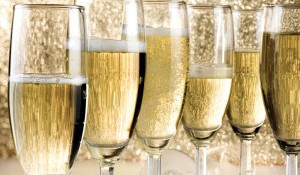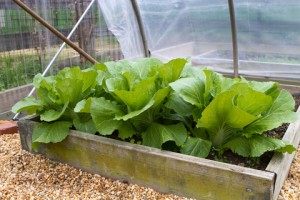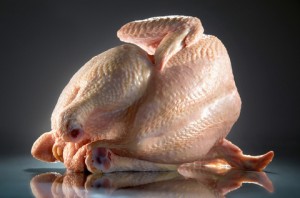by Lorri | Aug 1, 2012 | UnCorked

A few weeks ago a friend asked for my advice on the perfect drink to celebrate the high points in life. It’s always interesting because I want to blurt out, “Champagne, of course,” but then I remember many other sparkling wines are equally appropriate to deliver the celebratory pop!
I consider a wedding the most important celebratory event of most of our lives. If you are going to splurge for Champagne, this is the occasion to do it. Events with a large number of guests are where this splurge becomes a challenge. Remember it doesn’t need to be the same brand or bottle served throughout the reception. People tend to remember tasting the first and last glass of the celebration, so remember this timing when considering the budget.
The golden wedding anniversary celebration deserves the paramount. But because the guest list will likely include several generations, it’s best to stay with familiar styles your guest will enjoy. These may be slightly sweeter or off-dry. Keep in mind this is also a group more likely than most to appreciate a vintage Champagne or a special bottle you’ve been holding out for the occasion.
A 21st-birthday celebration generally will involve younger guests and most likely not all able to savor the bubbly. For those who have cellared a wine for the occasion this is the ideal moment for your vintage Champagne to be opened. To keep things festive for everyone, consider serving an alcohol-free sparkling beverage.
Some christenings and bar mitzvahs are celebrated during the day and can stay with a more casual wine like a California sparkling or Spanish cava. If the menu includes sweets, a Moscato d’Asti will not only be an ideal pairing but a safe wine for serving a diverse crowd.
by Lorri | Jul 25, 2012 | UnCorked
S alad was once merely a refreshing collection of leaves and herbs dressed with oil and seasoning, but many of our creations are becoming all-out meals. Our summer menus are much like those in every other household trying to beat the heat and keep it light. Salad (and not just the mixed greens standby) is a staple each week at dinner, so I am always looking for the ideal wine pairing and have started fine-tuning our salads to maximize the match.
alad was once merely a refreshing collection of leaves and herbs dressed with oil and seasoning, but many of our creations are becoming all-out meals. Our summer menus are much like those in every other household trying to beat the heat and keep it light. Salad (and not just the mixed greens standby) is a staple each week at dinner, so I am always looking for the ideal wine pairing and have started fine-tuning our salads to maximize the match.
The age-old wine pairing rule of “white wine with fish and red with meat” leaves our bountiful salads without much pairing advice.
As you know in your own creations, salads can include ingredients ranging from the traditional to the extraordinary. The wine pairing is less challenging when you consider the weight, and texture of the ingredients.
The more protein and weight the easier it is to find a match. That’s why the Cobb salad, with its roasted chicken, bacon, blue cheese and hard-cooked eggs, works effortlessly with many wines. Fruity, low-tannin wines are the best pairing for proteinpacked salads.
Salads with have high-acid ingredients like tomatoes, citrus and tangy cheeses like goat or feta pair best with high-acid wines like sauvignon blanc, Riesling, Champagne or sparkling wines.
Salty and pungent ingredients, much like protein, pair easily with wine. The classic Caesar with its salty anchovies finds a perfect partner in many fruity, sparkling or even off-dry wines.
The only troublemaker is usually not the salad itself but the dressing. Many of the bottled dressings (Thousand Island, ranch, Catalina) have a touch of sweetness that matches easily with wine.
Vinegar-based dressings can clash with wine; vinaigrettes with an olive-oil base work best for wine compatibility.
Over the past months these have been a few of our favorite wines we paired with salad.
THE VALUES
- 2011 Ruffino Orvieto, Italy (about $10 retail)
- 2011 Kendall Jackson Chardonnay, California (about $15 retail)
- 2011 Kris Pinot Grigio, Italy (about $14 retail)
THE SPLURGES
- 2011 Pascal Jolivet Attitude Sauvignon Blanc, France (about $28 retail)
- 2011 La Cana Albarino, Spain (about $17 retail)
- 2011 Turkey Flat Vineya rd s Ro s e, Australia (about $19 retail)
by Lorri | Jul 18, 2012 | UnCorked
 The wines you can serve with chicken dishes are seemingly limitless. In fact I would venture to say that there is not a varietal that can’t be matched with chicken.
The wines you can serve with chicken dishes are seemingly limitless. In fact I would venture to say that there is not a varietal that can’t be matched with chicken.
Over the years more families opt for chicken over beef or even fish when it comes to everyday dinners, with many of us turning to organic, grain-fed birds or free-range chicken as our main meat several nights a week.
As with most pairings, it’s how you cook the chicken and any dominant flavorings that guide us in creating the ideal pairing. These are a few of my favorite chicken dishes we have experimented with recently and wines to match.
Roasted chicken: cabernet sauvignon, merlot, sangiovese, malbec, rioja
THE VALUE
- 2010 Alamos Malbec, Argentina (about $13 retail)
THE SPLURGE
- 2010 Marques de Caceres Rioja, Spain (about $21 retail)
Chicken breast in creamy sauces: pinot noir, Riesling, tempranillo, chardonnay, viognier
THE VALUE
- 2011 Banrock Station Chardonnay, Australia (about $10 retail)
THE SPLURGE
- 2011 Peter Nicolay Mosel Riesling, Germany (about $18 retail)
Smoked or barbecued chicken: zinfandel, cabernet franc, tempranillo
THE VALUE
- 2010 Silver Peak Vineyards Zinfandel, California (about $13 retail)
THE SPLURGE
- 2010 Ghost Pines Zinfandel, California (about $20 retail)
Grilled chicken: semillon, chardonnay, pinot noir
THE VALUE
- 2011 Chateau St. Michelle Semillon, Washington (about $14 retail)
THE SPLURGE
- 2010 Louis Jadot Pinot Noir, France (about $26 retail)
Cajun chicken gumbo: NV Champagne, sparkling wine, pinot gris, chardonnay, pinot noir
THE VALUE
- 2011 Columbia Crest Two Vines Chardonnay, Washington (about $14 retail)
THE SPLURGE
- 2011 Ponzi Pinot Gris, Oregon (about $20 retail)
Chicken Curry with Vegetables: Spanish cava, sparkling wine, rose, sauvignon blanc
THE VALUE
- 2011 La Vieille Ferme Rhone Rose, France (about $12 retail)
THE SPLURGE
- 2011 Honig Sauvignon Blanc, California (about $17 retail)
by Lorri | Jul 11, 2012 | UnCorked
Pinot grigio has a reputation for being an inoffensive grape that produces straightforward wines. It often shows up as the house wine in many restaurants because of its easy, uncomplicated drinking style. It is this combination of characteristics that contribute to its mass appeal. However, this grape isn’t as simple as it appears. It can change its identity according to country or climate.
This grape wine is known by different names depending on the region. For the most part in California and Italy it is known as pinot grigio; however, in Oregon and France this wine is often labeled pinot gris. Even more confusing — the names are used interchangeably depending on the producer.
Even though it produces a dry, fruity white wine, the grape is actually a mutation of the famed red grape pinot noir. The leaves and grape shape are almost identical to pinot noir, but the berries are colored anywhere from grayish-blue to brownish-pink. Historically, it was grown in the midst of pinot noir vines and harvested as a blending grape, adding a touch of softness and acidity to round out the tannins of the red pinot noir.
Selecting the best pinot gris/ grigio can be easy if you know its growing preferences. It excels in climates on the cooler side such as the Vosges foothills of Alsace, France, cooler areas of California’s Sonoma Valley, the Willamette Valley of Oregon, New Zealand’s Marlborough region and the Lombardy region of Italy.
THE VALUE
- 2011 Francis Ford Coppola Winery Pinot Grigio, California (about $15 retail)
- 2011 Ecco Domani Pinot Grigio, Italy (about $14 retail)
THE SPLURGE
- 2011 Trimbach Pinot Gris, Alsace, France (about $26 retail)
- 2011 J Vineyards and Winery Pinot Gris, California (about $24 retail)
by Lorri | Jul 4, 2012 | UnCorked
As summer heat oppresses us, it’s time to break away from full-bodied reds and shift to light and refreshing wines.
There’s a world of wines to get us through the summer heat, including a few roses and reds that are easy to overlook.
We all know syrah and zinfandel are great with barbecues but not so great with summer heat. If you find you still long for red wines when it’s 95 degrees in the shade, try lighter styles such as pinot noir. The light-bodied wine accepts a slight chill before serving, making it a refreshing option. The most important tip for serving summer reds — or any wine for that matter — is to serve the wine at the correct temperature. Although you don’t want to serve red wine ice cold, it shouldn’t be served warm either. Don’t let red wines heat up, because it accentuates the tannin and alcohol, making them anything but refreshing. Most red wines are best served between 55 and 65 degrees.
THE VALUE
- 2011 Cellar No. 8 Pinot Noir, California (about $9 retail) 2010 Kenwood Pinot Noir, California (about $14 retail)
THE SPLURGE
- 2010 Adelsheim Vineyard Pinot Noir, Oregon (about $32 retail) 2009 David Bruce Central Coast Pinot Noir, California (about $26 retail)
If you keep in mind that not all rose wines are sweet, this may be the ultimate summer cool-down choice. Rose has all the antioxidant benefits of a red wine (rose is made using the skins of the grapes) with the refreshing taste of white wine. Quality rose wine is neither sweet nor fizzy, and from many producers it’s a refreshing bone-dry wine filled with fresh flavors of cherry, strawberry and raspberries.
THE VALUE
- 2011 La Vieille Ferme Rose, France (about $11 retail) 2011 Jacobs Creek Shiraz/Rose, Australia (about $11 retail)
THE SPLURGE
- 2011 Belle Glos Pinot Noir Rose, California (about $21 retail) 2011 Turkey Flat Rose, Australia (about $20 retail)
There’s no getting around it, summertime is the right time for a chilled white wine. When it’s hot, the most refreshing are light-bodied whites.
THE VALUE
- 2011 Rosemount Estate Pinot Grigio, California (about $11 retail)
- 2011 Matua Valley Sauvignon Blanc, New Zealand (about $14 retail)
THE SPLURGE
- 2009 D’Arenberg Hermit Crab Marsanne/Viognier, Australia (about $19 retail)
- 2011 Bridlewood Reserve Viognier, California (about $24 retail)
by Lorri | Jun 27, 2012 | UnCorked
With Independence Day just around the corner, it seems the perfect time to reflect on America’s journey to becoming a wine producing country. In the 16th century, the first settlers found an abundance of native vines growing on the East Coast. The first challenge for winemakers in Virginia and the Carolina colonies was not finding an indigenous grape that would thrive, but finding one that could satisfy European palates.
In 1619, the first European vines were imported to Virginia and planted in North American soils. The plantings expanded along much of the East Coast but were mostly unsuccessful: The strange climate, diseases and pests took harsh tolls.
The plantings of these vines continued to fail year after year until hybrid vines were developed. The “vignoble” of Cincinnati, the “muscadine” of the South and the “concord” were extensively planted to produce table grapes, jelly and wine.
Around 1779, Franciscan missionaries realized the terroir of California could support European vines. If you fast forward 200 years through vine disease, Prohibition, the World Wars and instability of the market, it brings us today to a country ranked as the fourth largest producer of wine in the world behind Italy, France and Spain.
Today wine is produced in nearly every state, with California leading the pack, making July Fourth an ideal time to enjoy and celebrate the wines of America.
THE VALUES
- 2010 Cellar No. 8 Pinot Noir, California (about $12 retail)
- 2010 Cline Cellars Cashmere, California (about $15 retail)
- 2010 Beringer Founders Estate Shiraz, California (about $12 retail)
THE SPLURGES
- 2009 Bell Big Guy Red, California (about $26 retail)
- 2009 Gloria Ferrer Carneros Chardonnay, California (about $32 retail)
- 2009 Honig Cabernet Sauvignon, California (about $40 retail)

 alad was once merely a refreshing collection of leaves and herbs dressed with oil and seasoning, but many of our creations are becoming all-out meals. Our summer menus are much like those in every other household trying to beat the heat and keep it light. Salad (and not just the mixed greens standby) is a staple each week at dinner, so I am always looking for the ideal wine pairing and have started fine-tuning our salads to maximize the match.
alad was once merely a refreshing collection of leaves and herbs dressed with oil and seasoning, but many of our creations are becoming all-out meals. Our summer menus are much like those in every other household trying to beat the heat and keep it light. Salad (and not just the mixed greens standby) is a staple each week at dinner, so I am always looking for the ideal wine pairing and have started fine-tuning our salads to maximize the match. The wines you can serve with chicken dishes are seemingly limitless. In fact I would venture to say that there is not a varietal that can’t be matched with chicken.
The wines you can serve with chicken dishes are seemingly limitless. In fact I would venture to say that there is not a varietal that can’t be matched with chicken.